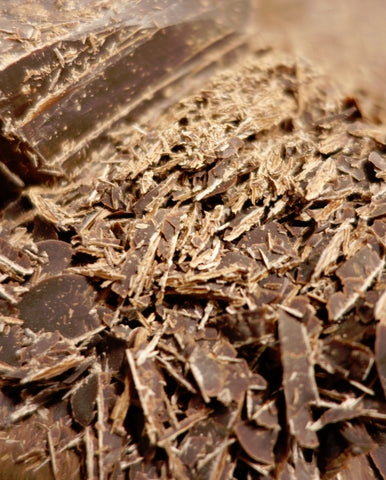FREE SHIPPING ON USA ORDERS OVER $150
FREE SHIPPING ON USA ORDERS OVER $150
October 04, 2016 0 Comments
Until I began digging around for a recipe for homemade Nutella, the Italian chocolate-hazelnut spread that’s taken America by storm, I had no idea just how interesting its history was.
The story begins in Piedmont in northwestern Italy during the Napoleonic Wars. Sidled up against the Alps, Piedmont is known for its centuries-old love affair with chocolate—and for its chocolate producers’ expertise. (It is said Swiss chocolate makers came to the region’s capital, Turin, to learn their trade.)

This love affair flourished from the late 16th century until 1806, when it was stymied by Napoléon’s “Continental blockade,” which ordered France’s allies to cease trade with the Brits. Napoléon’s intent was to paralyze the British economy; instead, the embargo backfired, causing France and its allies to suffer from a steep reduction in trade. One of the blockade’s ramifications was a sudden and extreme shortage of cocoa. This left the Piedmontese scrambling. As it happens, the world’s most prized hazelnuts grow prolifically in the hills of southern Piedmont. We’re not sure who discovered that, when roasted and ground with chocolate, the nuts would not only help stretch a scarce resource, they would compliment it deliciously.

Fast forward to 1946 when a pastry maker named Pietro Ferrero responded to yet another shortage of cocoa—this time caused by WWII rationing—by creating a spreadable blend of ground hazelnuts, sugar and a bit of that precious chocolate. Ferrero shaped this product, which he called “Giandujot,” into a loaf that could be sliced and served on bread. With time, under the Ferrero Company’s ownership, “Giandujot” became “Supercrema.” Pietro’s son, Michele, tinkered with that recipe and in 1964 he released a spreadable chocolate he called “Nutella.” Today, the Ferrero family still owns the company (almost an astounding feat these days when Nestlé owns nearly everything else).
Why make homemade chocolate-hazelnut spread? First of all, it’s fun. Second, the results are delicious. And then there’s a third reason: have you ever looked at the ingredients in a jar of Nutella? They’re not bad. I mean, it’s not as if we’re eating this stuff in quantity, but the first ingredient isn’t hazelnuts or even chocolate. It’s palm oil. The next is sugar. And then, the Nutella we buy in the States is made in Mexico. But I digress…
Most of the homemade Nutella recipes I found use hazelnut oil rather than the nuts themselves. I wanted to find the closest approximation of the traditional Piedmontese concoction, so I looked to one of my favorite cookbook authors and bloggers, David Lebovitz. David’s written seven cookbooks, five of them focused on dessert, one of them called The Great Book of Chocolate. For that reason, he’s my go-to when I’m looking for dessert recipes, especially desserts made with chocolate. Born in the States, David’s lived in Paris since 1999. He adapted this recipe from the Encyclopédie du chocolat, un ouvrage essential, according to the reviews on Amazon (which means, Google Translate tells me, “an essential book”).
The truth is, I would like this recipe to be a bit more chocolatey. And that can be accomplished easily by adding more bittersweet chocolate, or throwing in a handful of roasted ground cocoa nibs. That said, this opinion didn’t keep me from eating 2/3rds of the contents of one of the jars I made…in less than two days. It’s delicious, especially on a warm slice of good bread.

Homemade Chocolate Hazelnut Spread (with thanks to David Leibovitz and Encyclopédie du chocolat)
Ingredients
1/3 cup whole almonds
1 1/3 cup hazelnuts
1 3/4 cup whole milk
7/8 cup powdered whole milk
3 tablespoons mild-flavored honey
pinch of salt
6 ounces bittersweet or semisweet chocolate, chopped
5 ounces milk chocolate, chopped (I used high-quality milk chocolate chips)
Earlywood Ingredients
1 tera scraper
Instructions
*My food processor broke a few months back. Since then, I’ve been using my Ninja in place of a food processor and the Ninja works just fine. The only possible challenge—getting the chocolate-hazelnut mixture out of the bottom and sides of the vessel—was easily remedied by my Earlywood l flat sauté, which retrieved every last bit.


